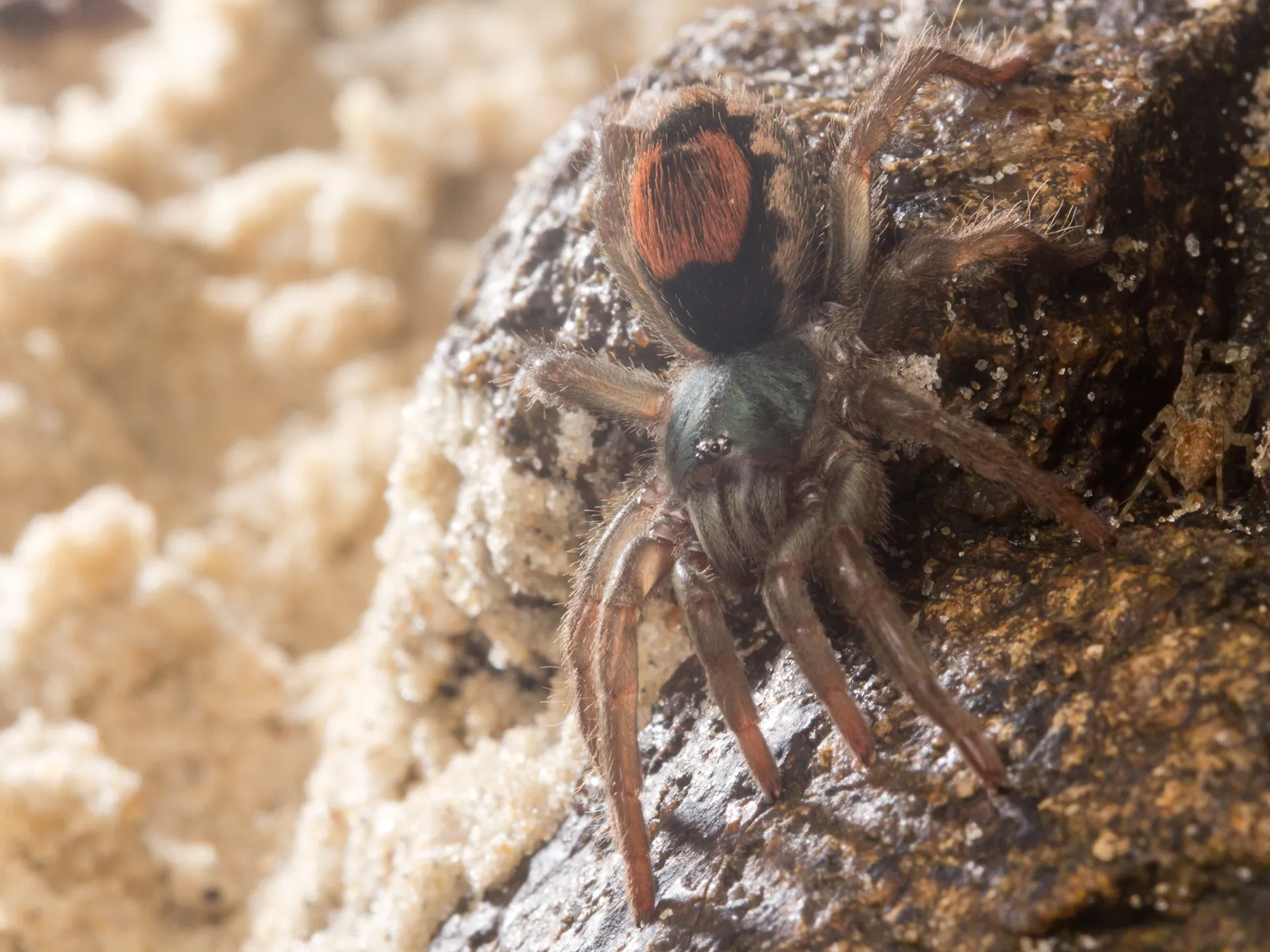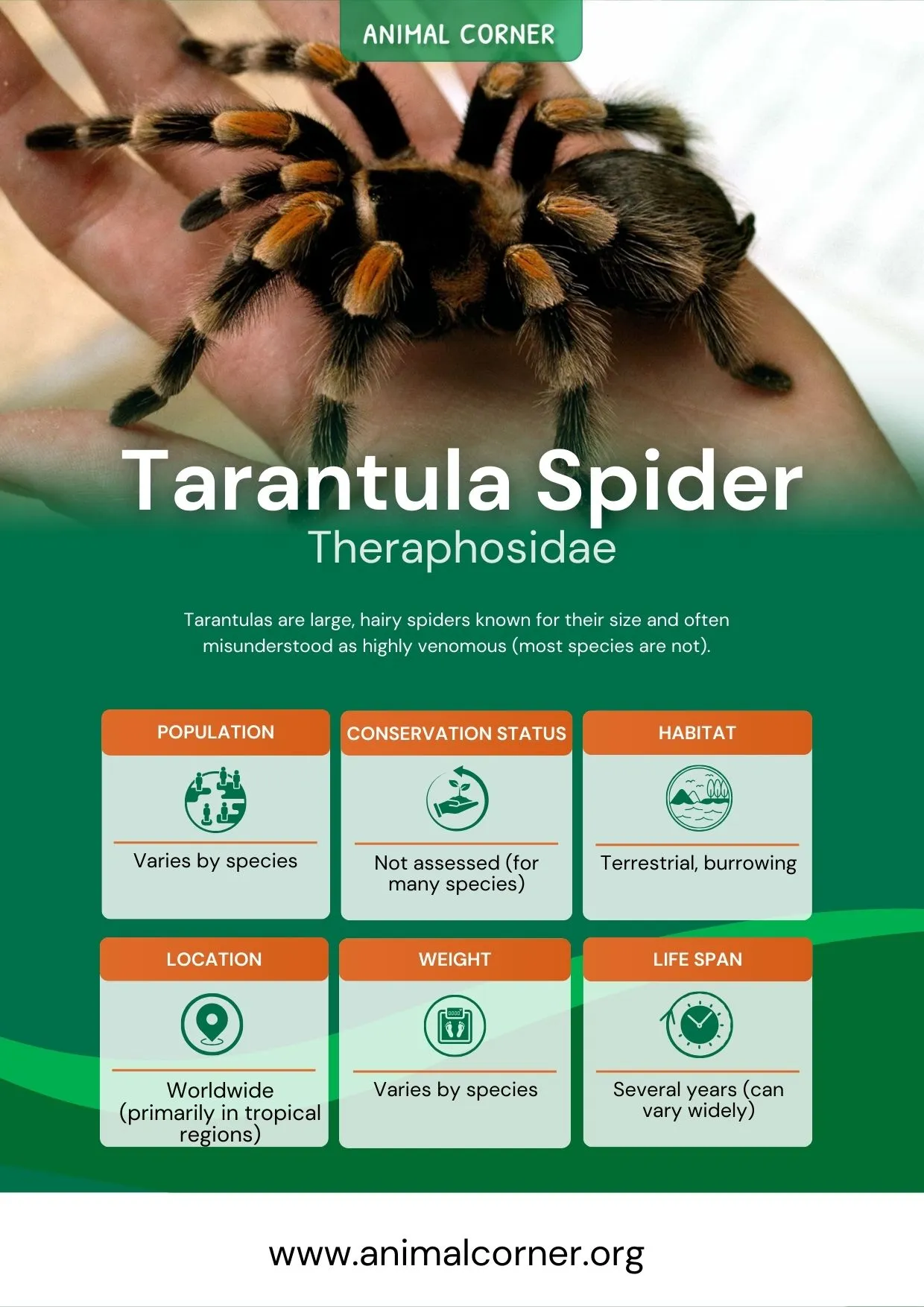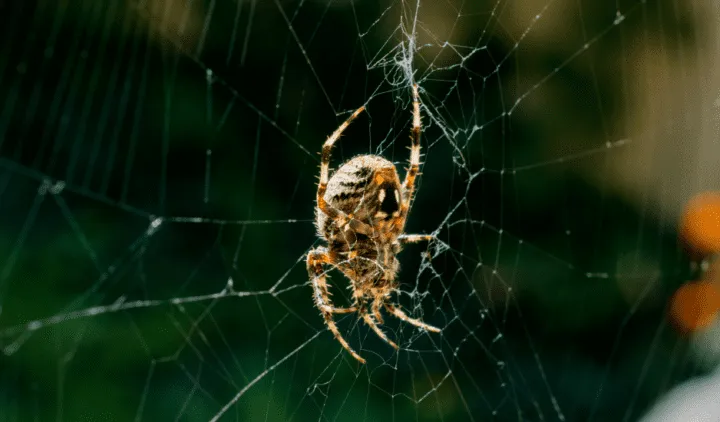What Are Tarantulas and Spiders
Both tarantulas and spiders belong to the class Arachnida, meaning they are arachnids. This group is characterized by having eight legs. While both are arachnids, they belong to different groups and have distinct characteristics. The purpose of this article is to help you to learn more about the differences between these fascinating creatures and to understand their unique roles in the ecosystem. Understanding these differences can help in appreciating the diversity within the arachnid family and dispel common misconceptions. Whether you are a seasoned entomologist or simply curious about nature, this comparison will provide valuable insights into the worlds of tarantulas and spiders.
Tarantulas
Tarantulas are large, hairy spiders known for their size and imposing appearance. They are generally ground-dwelling creatures, often found in burrows or under rocks. Tarantulas are known to be relatively docile compared to some other spiders, but they can still bite if threatened. They also possess urticating hairs, which they can flick off their abdomens as a defense mechanism. These hairs can cause irritation to the skin and eyes of potential predators. Their diet primarily consists of insects, but larger tarantulas may also consume small vertebrates like mice or lizards. They are popular pets and are found in many different regions of the world.
Spiders

Spiders, as a broader group, encompass a vast array of species with diverse characteristics. They are found in virtually every habitat on Earth, except for the Antarctic. Spiders are known for their ability to produce silk, which they use to create webs, capture prey, and build shelters. The size, shape, and construction of spider webs vary greatly depending on the species. Spiders play a crucial role in controlling insect populations, making them beneficial predators in many ecosystems. Their diets consist of insects and other small invertebrates, which they subdue using venom or by wrapping them in silk. They are incredible creatures, and very important to the ecosystem.
The 5 Key Differences Between Tarantulas and Spiders
Size and Appearance
One of the most noticeable differences is size. Tarantulas are generally much larger than most spiders, with some species having leg spans of over 10 inches. Their bodies are also more robust and hairy, giving them a more intimidating appearance. Spiders, on the other hand, come in a wide range of sizes, but most are smaller than tarantulas. Their bodies are usually smoother, and their overall build is more streamlined. The hairs of tarantulas and their overall look is one of their distinct features compared to spiders. While some spiders may have a fearsome look to them, the tarantula is just more imposing overall, due to its size and hair.
Body Structure

Tarantulas have a more pronounced body structure. Their bodies are divided into two main parts the cephalothorax (fused head and chest) and the abdomen. Tarantulas also have two pairs of book lungs, which aid in respiration. Spiders also have a cephalothorax and abdomen, but they often have a more slender build. Spiders have spinnerets at the end of their abdomens, which they use to produce silk. This silk is a crucial component of their webs, which are used to catch prey. The way that they build their bodies is one of the key differences between these arachnids.
Lifespan
Tarantulas generally have a much longer lifespan than most spiders. Female tarantulas can live for over 25 years in captivity, while males typically live for 5-10 years. Spiders, however, have a much shorter lifespan, with most species living for only one to two years. This difference in lifespan is attributed to the tarantula’s slower metabolism and their ability to survive in a variety of conditions. Many spiders die after mating, and that is one of the main reasons for the differences in lifespan between these arachnids.
Venom and Bite
Both tarantulas and spiders use venom to subdue their prey. However, the potency of their venom and the effect on humans vary. Tarantula bites are generally not considered dangerous to humans, and the effects are similar to a bee sting. However, some spiders, such as the black widow and brown recluse, have venom that can cause serious health problems. The venom of these spiders can cause a range of symptoms, from localized pain and swelling to more severe systemic effects. It’s essential to identify spiders to avoid being bitten by any of the dangerous ones.
Habitat and Behavior

Tarantulas are primarily terrestrial and live in burrows or under rocks. They are generally nocturnal hunters and ambush their prey. They are often solitary creatures, except during mating season. Spiders, on the other hand, occupy a wider range of habitats, including forests, grasslands, and even aquatic environments. They use various hunting strategies, including building webs, actively hunting, and ambushing prey. Spiders are also more social than tarantulas, with some species living in colonies.
Why Does This Matter
Understanding the differences between tarantulas and spiders is important for several reasons. It helps in appreciating the diversity of the arachnid world, improving our ability to identify them, and understanding their ecological roles. For those considering keeping either as pets, this knowledge can provide insights into their care requirements and behaviors. Additionally, being able to distinguish between them is important for safety reasons, as some spiders are venomous and pose a threat to humans. Finally, by understanding these creatures, we can develop a greater appreciation for the natural world and the importance of protecting it.
